
|
|
|
|
|
The Year 2013
The year 2013 began in March with an excellent trip to Switzerland. Almost all military airfields in Switzerland were visited and amazing pictures were taken during this trip. After visiting Frisian Flag at Leeuwarden and a base visit to Beauvechain, the 100th anniversary of military aviation in the Netherlands was celebrated at Volkel Air Base. This turned out to be a fantastic event with many surprising aircraft. 2013 was also the year of the retirement of the Phantom in Germany at Wittmund. 2013 was also the year where Hungary was visited for the first time. The show at Kecskemet was fantastic. The year ended with the trip of the year to the Baltic States and France.
|
|
|
|
|
|
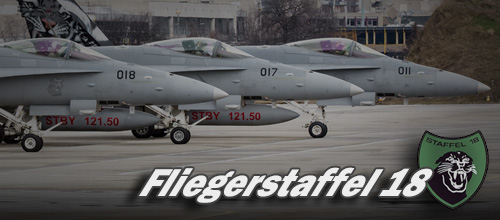
|
|
Fliegerstaffel 18 “Panthers”
The Swiss Air Force, Part 1; Sion, March 18, 2013
There are no planes based at the Swiss air base Sion. Only a few times a year Fliegergeschwader 14 is stationed on this airbase in the south of Switzerland. Fliegerstaffel 18 is one of the two units which are a part of this Fliegergeschwader. Fliegerstaffel 18 is equipped with the American McDonnell Douglas FA/18 Hornet. The first F/A-18s were delivered in 1996. Fliegerstaffel 18 was in 1997 after Fliegerstaffel 17 the second unit which received the Hornet. The Hornet is the most sophisticated and efficient aircraft which ever flew at Fliegerstaffel 18.
|
|
|
|
|
Fliegerstaffel 19
The Swiss Air Force, Part 2; Sion, March 18, 2013
The second unit which is part of Fliegergeschwader 14 is Fliegerstaffel 19. This unit is one of the Swiss militia units and consists almost enti- rely of reservists who only fly a few months a year. This unit is equip- ped with the Northrop F-5E Tiger. The unit is several times per year stationed at Sion in the south of the country. The militia units like Fliegerstaffel 19 will continue to play an important role in the air defense of Switzerland. The unique system where many reservists are involved is an economically viable system in the defense of a country.
|
|
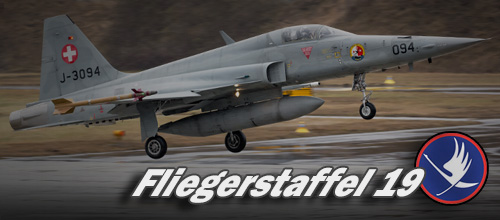
|
|
|
|
|
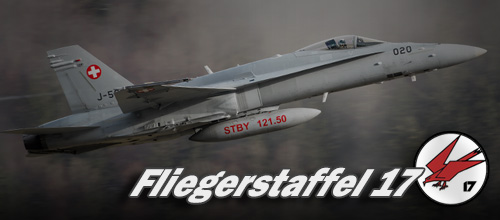
|
|
Fliegerstaffel 17 “Falcons”
The Swiss Air Force, Part 3; Payerne, March 19, 2013
Fliegerstaffel 17 is one of the two staffels which are part of Fliegerge- schwader 11. This unit is stationed at the Swiss airbase Payerne. This air base is located in the west of Switzerland and is the largest air base in the country. Fliegerstaffel 17 is equipped with the American build McDonnell Douglas F/A-18 Hornet. In addition to the operational tasks, the F/A-18 Hornet Display Team is a part of Fliegerstaffel 17. This team will perform its display at several annual air shows and demonstrations what the Swiss Air Force does in its daily life.
|
|
|
|
|
Lufttransportstaffel 5
The Swiss Air Force, Part 4; Payerne, March 19, 2013
The third geschwader which is based at Payerne is Lufttransportge- schwader 1. Also this unit consists of two staffels. Lufttransportstaffel 5 is the second unit of the geschwader after Lufttransportstaffel 1. The unit is equipped with three helicopter types, namely; The AS332 Super Puma, the AS532 Cougar and the EC635. The AS332 Super Puma was assigned to Lufttransportstaffel 5 from 1992. In addition to the Super Puma, a third series of helicopters was also supplied to the Swiss Air force and Lufttransportstaffel 5 of the type AS532 Cougar.
|
|
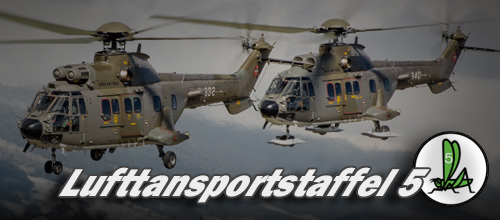
|
|
|
|
|
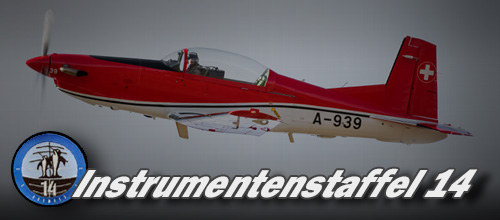
|
|
Instrumentenflugstaffel 14
The Swiss Air Force, Part 5; Payerne, March 19, 2013
Instrumentenflugstaffel 14 is stationed at the Swiss airbase Emmen in the North-Eastern part of the country. The unit is equipped with the Pilatus NCPC-7. Instrumentenflugstaffel 14 is part of the advanced pilot training of the Swiss Air Force. The unit had a small PC-7 detach- ment at the Payerne airbase in week 12. The 28 NCPC-7s of Instrumentenflugstaffel 14 play an important role within the Swiss Air Force when it comes to training and demonstra- tions; the aircraft will fly in next years as the main training aircraft of the Swiss Air Force.
|
|
|
|
|
Fliegerstaffel 11 “Tigers”
The Swiss Air Force, Part 6; Meiringen, March 20, 2013
Fliegerstaffel 11 is based at the Swiss Airbase Meiringen and is the Tiger unit of the Swiss Air Force. The unit is a member of the NATO Tiger Association. This is remarkable, because Switzerland is not a member of NATO. Fliegerstaffel 11 is part of Fliegergeschwader 13 and is equipped with the McDonnell Douglas F/A-18 Hornet. The unit is in Switzerland by far the most experienced unit, because they participate in the Tiger meet every year. The unit has won the Silver Tiger Trophy at Gütersloh in 1982 and at Ladivisiau in 2008.
|
|
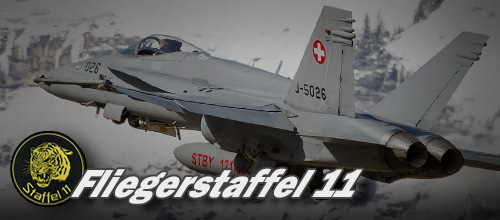
|
|
|
|
|
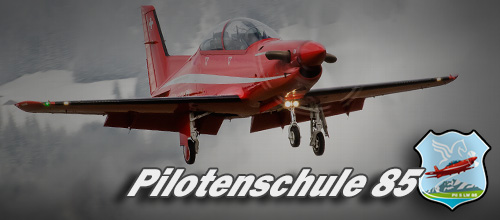
|
|
Pilotenschule 85
The Swiss Air Force, Part 7; Meiringen, March 21, 2013
The Pilotenschule 85 is based at the Swiss airbase Emmen and is the basic pilot training school of the Swiss Air Force. The unit is equipped with 8 Pilatus PC-21 trainers. The aircraft can regularly been seen at various airports in the country. The aircraft practice many touch and go’s during these extended training flights. The design of the PC-21 is based on the PC-7 Turbo Trainer. This aircraft is already for many years in service within the Swiss Air Force. The trigger to start the design of the PC-21 took place in 1997 with a modified Pilatus PC-7.
|
|
|
|
|
Lufttransportstaffel 6
The Swiss Air Force, Part 8; Alpnach, March 22, 2013
The Swiss airbase Alpnach is the home base of Lufttransportgeschwa- der 2. Lufttransportstaffel 6 is the first staffel of two staffels which are part of this geschwader. Lufttransportstaffel 6 is nowadays equipped with three types of helicopters, namely; the AS332 Super Puma, the AS532 Cougar and the Eurocopter EC635. The training of the militia pilots is every year a comprehensive training course which makes them fully operational deployable in times of war. The militia pilots fly an average of 50 to 90 flight hours per year with these helicopters.
|
|
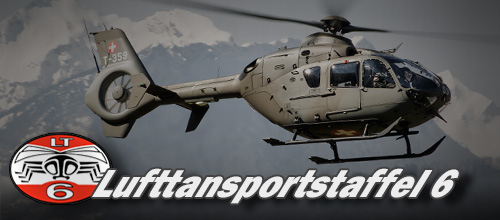
|
|
|
|
|
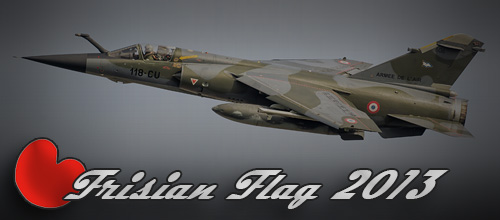
|
|
International Exercise Frisian Flag
The 4 Alternatives of the JSF; Leeuwarden, April 23, 2013
The F-16 is in after days of its career at the Dutch air force and the country will purchase a new plane to replace the F-16. Despite the political discussions, the choice of the U.S. Joint Strike Fighter was an inevitable choice. There is already a lot of money invested in the development of this aircraft. The Dutch Air Force has already 2 test aircraft of this type in the United States in service. However, there are also a few competitors available, namely; the Saab Gripen, the Dassault Rafale, the Eurofighter and Boeing F/A-18 Super Hornett.
|
|
|
|
|
Les Diables Rouges
The Marchetti’s of the Red Devils; Beauvechain, April 29, 2013
The four red Marchetti's of the Red Devils from Belgium are nowadays a familiar sight at various airshows in Western Europe. Each year, the Red Devils are touring through Europe where they fly demonstrations at airshows. The Red Devils were first established in 1957 when the team was equipped with Hawker Hunters. The Red Devils are flown by the best flight instructors from Belgium. The name Red Devils symbolizes everything which is Belgian. The national football team is also known as the Red Devils and it is also one of the Belgian beers.
|
|
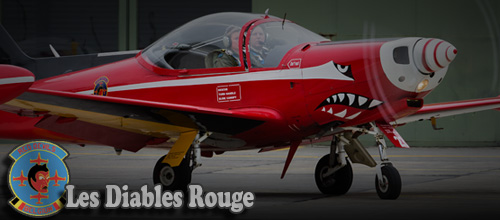
|
|
|
|
|
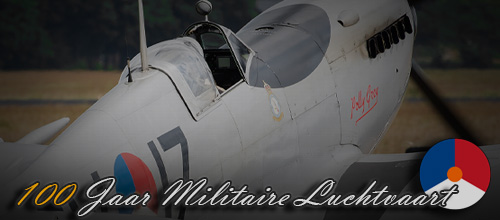
|
|
The Birth of the Air Force
100 Years of Military Aviation, part 1; Volkel, June 12–17, 2013
The Dutch military aviation began in 1910 when an aviation depart- ment of the Dutch armed forces was established. From 1913 Soester- berg was the first Dutch military airbase which became in operational service. This airbase is seen in the Dutch aviation history as the birthplace of the Royal Netherlands Air Force. The no 322 Dutch Squa-dron was established in England in 1943. The unit was immediately equipped with the British Supermarine Spitfire. The no 322 Squadron is the oldest existing squadron of the Royal Netherlands Air Force.
|
|
|
|
|
Het Koninklijk Nederlandsch-Indisch Leger
100 Years of Military Aviation, part 2; Volkel, June 12–17, 2013
The Military Aviation of the Royal Netherlands East Indies Army (KNIL-ML) went during and after the Second World War through a turbulent period. The KNIL-ML was deployed in Australia during the war and played an important role during the Indonesian war of independence when the Police Actions took place in the late 40s. The independent government of Indonesia claimed New Guinea since the end of the Second World War. An attack on the Dutch detachment could not be defended; the Dutch government was forced to give up New Guinea.
|
|
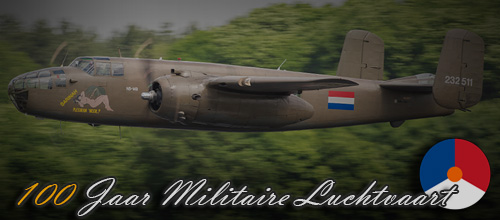
|
|
|
|
|
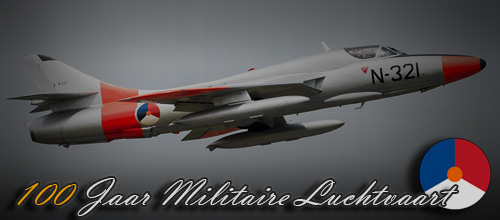
|
|
The Jet Age & the Cold War
100 Years of Military Aviation, part 3; Volkel, June 12–17, 2013
Shortly after The Second World War, the Royal Netherlands Air Force received its first jet fighters. The new Gloster Meteor was the first aircraft in a long series of jets which would fly in the country. During the Cold War From 1953, the Royal Netherlands Air Force became an independent part of the Dutch defense. From 1960, the world entered a new era. The two superpowers, the Soviet Union and the United States were opposites during the Cold War. The typical symbols of the Cold War were the famous Berlin Wall and the Iron Curtain.
|
|
|
|
|
The World Changes, a New Era
100 Years of Military Aviation, part 4; Volkel, June 12–17, 2013
After the fall of the Berlin wall a lot would change in Europe. The Air Force has changed dramatically and was drastically changed into a tactical air force. The new tactical air force would come into action for the first time during the war in Bosnia and during the bombing of Serbia during the Kosovo conflict in the late 90s. During the first day of Operation Allied Force, the Dutch pilot Peter Tankink of the no 322 Squadron shot down a Serbian MiG-29 with an AMRAAM missile on March 24, 1999. The Kill was confirmed later by the AWACS.
|
|
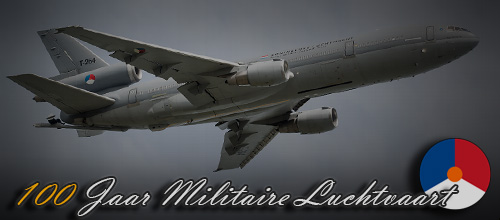
|
|
|
|
|
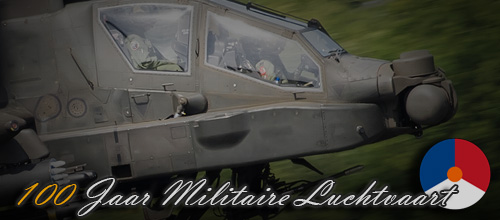
|
|
From GPLV to DHC, the Dutch Helicopters
100 Years of Military Aviation, part 5; Volkel, June 12–17, 2013
In more than 60 years, the Light Aircraft Group (GPLV) has grown to the modern Defense Helicopter Command. The versatile helicopters around the world are in service nowadays compared to the early days of this organization. Most helicopters are based at Gilze-Rijen; the rest is based at De-Kooy and Leeuwarden. The Dutch Defense Helicopter Command (DHC) was founded in 2008. The DHC was a merge of the helicopter units of the Air Force (RNLAF), the Air Mobile Brigade (LMB) of the Army (KL) and the Naval Aviation (MLD) of the Navy.
|
|
|
|
|
The Royal Netherlands Air Force
100 Years of Military Aviation, part 6; Volkel, June 12–17, 2013
The modern Royal Netherlands Air Force is a company which is using modern aircraft and helicopters. The Royal Netherlands Air Force operates 24 hours a day airpower in the Netherlands and abroad. The air force will shrink drastically in the nearby future to a compact and flexible air force able to perform its job very well. The Netherlands is one of the countries which are member of a partnership for the deve- lopment of the Joint Strike Fighter (JSF). The JSF will be the succes- sor to the outdated F-16; two JSF test planes fly already in the USA.
|
|
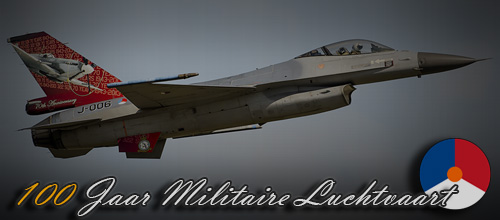
|
|
|
|
|
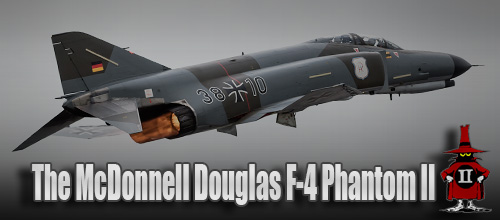
|
|
Introduction of the F-4 in Germany
Phantom Pharewell, 1973 – 2013, part 1; Wittmund, June 28–29, 2013
The German Luftwaffe was next to the USAF one of the biggest users of the American built McDonnell Douglas F-4 Phantom II.
The Luft- waffe had in total 10 F-4E's, 88 RF-4E’s and 175 F-4F's in active service in West Germany during the Cold War.
The Phantom has built up a good reputation over 40 years of active duty. The West German Luftwaffe was next to the United
States and the United kingdom one of the major users of the F-4 Phantom. The West German Luftwaffe was only 16 years old
when the Phantom entered service in 1971.
|
|
|
|
|
The F-4F Jagdgeschwaders
Phantom Pharewell, 1973 – 2013, part 2; Wittmund, June 28–29, 2013
The German Luftwaffe had over the years four operational Jagdge- schwaders which flew the F-4F. These units, were;
JG-71 at Wittmund, JG-72 at Rheine-Hopsten, JG-73 at Laage and JG-74 at Neuburg. JG-72 and JG-73 were originating
fighter-bomber units which operated under the name JBG-35 and JBG-36. JG-71 was in 1971 the first unit which received
the Phantom. The last Phantoms would be retired at Wittmund during the Phantom Pharewell ceremony on June 29, 2013.
JG-71 was disbanded immediately after the phase out of the Phantom.
|
|
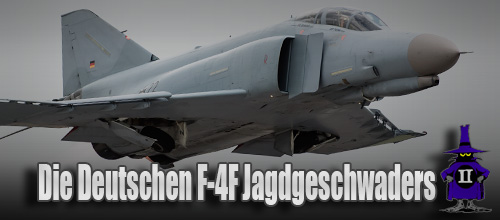
|
|
|
|
|
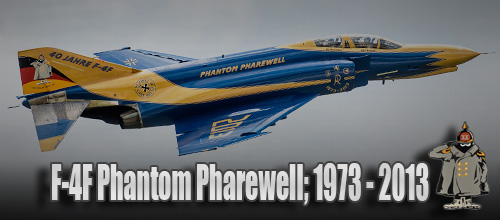
|
|
The End of the Phantom Era
Phantom Pharewell, 1973 – 2013, part 3; Wittmund, June 28–29, 2013
Since the introduction of the F-4F Phantom in 1973, the aircraft has built up a great reputation over the last 40 years.
There will be an end to the German Phantom era this year. The German Luftwaffe orga- nized therefore the Phantom
Pharewell at the North German airbase Wittmund on June 28 and June 29. Aviation Enthusiasts were able to have a look at
the Phantom from close distance during the spotter’s day on June 28, 2013. The farewell ceremony took place on Saturday,
June 29; the 4 colored Phantoms would take-off during this event.
|
|
|
|
|
Lufttransportgeschwader 63
The Tornado’s of AG-51 Temporarily at Hohn; Hohn, July 14, 2013
The North German airbase Hohn is the home base of Lufttransport- geschwader 63 (LTG-63) and is located in the north of
Germany. LTG-63 is equipped with the C-160D Transall. This aircraft is the main transport aircraft of the German Air
Force and will be replaced by the Airbus A400M Atlas within several years. Hohn will eventually be closed with the
introduction of the Atlas. The Tornado’s of the nearby Schleswig-Jagel will temporarily be based at Hohn in July
and August 2013, because their own home base has a runway which is renovated.
|
|
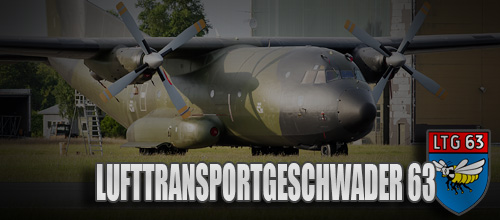
|
|
|
|
|
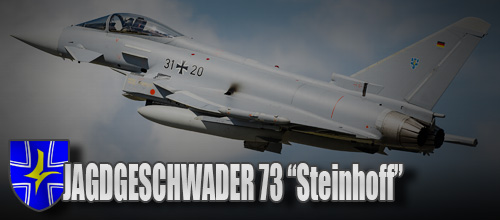
|
|
Jagdgeschwader 73 "Steinhoff"
The German Eurofighter Flying School; Rostock-Laage, July 15, 2013
Jagdgeschwader 73 was a unit of the West German Air Force before the unit became a military symbol of the reunification of Germany in 1991. JG-73 was the first unit in Germany which was equipped with both Eastern and Western aircraft. In 1997, JG-73 received the name Steinhoff to honor the famous Ace of the war. Jagdgeschwader 73 "Steinhoff" (JG-73) is now stationed at the North German airbase Rostock-Laage. Laage is located at a distance of approximately 30 kilometers south of the city of Rostock in the far north of Germany.
|
|
|
|
|
The Royal International Air Tattoo, part 1
Maritime Patrol Aircraft; RAF Fairford, July 21-22, 2013
During the RIAT in 2013, the theme of the event was SkyGuardian. This theme includes observation and patrol aircraft. The first patrol aircraft were mainly used against enemy submarines. The aircraft patrolled above sea until they observed a submarine. Subsequently, the aircraft would attack this submarine until the ship sunk. The history of maritime patrol aircraft started during the First World War. This type of aircraft would evolve over the years into an indispensable compo- nent in a modern navy; many of these planes are in service nowadays.
|
|
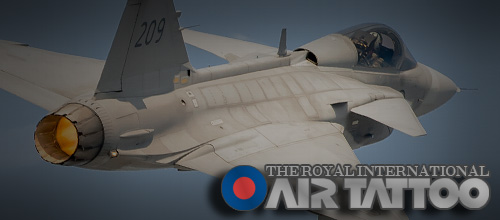
|
|
|
|
|
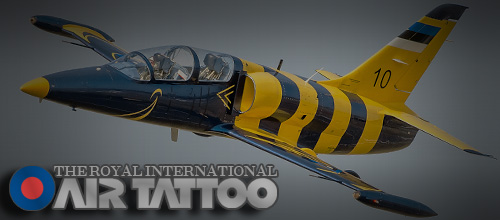
|
|
The Royal International Air Tattoo, part 2
Airbourne Early Warning; RAF Fairford, July 21-22, 2013
Modern AEW aircraft have become a powerful weapon when it comes to obtaining crucial information about targets and movements during a conflict. The development of AEW aircraft was started during the Second World War when the first radar systems were built into aircraft, nowadays they have become indispensable. The British were using the first primitive radar systems; the first radar was placed in an aircraft during the Second World War. These aircraft were used during the so-called Controlled Air Interceptions of German aircraft at night.
|
|
|
|
|
The Royal International Air Tattoo, part 3
Photo Reconnaissance Aircraft; RAF Fairford, July 21-22, 2013
Photo reconnaissance flights are one of the oldest aspects of aviation. Aerial photographs brought in the past always the crucial information about troop movements of the enemy. The tactical photo reconnais- sance developed rapidly during the Vietnam War. The most frequently used tactic was low flying aircraft which were fully equipped with cameras. Nowadays aerial photo reconnaissance is performed by UAVs to minimize the risks of the pilot; this was in the past done by fighters. It is clear the UAV plays a major role in aerial photography.
|
|
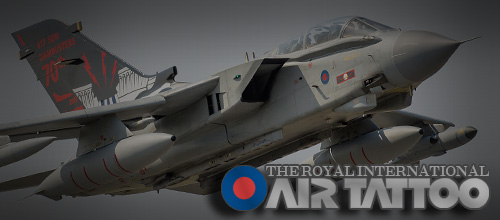
|
|
|
|
|
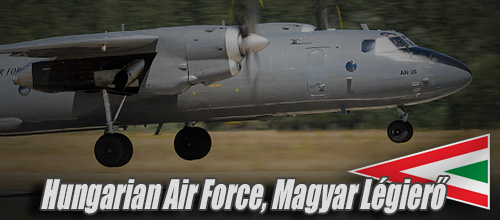
|
|
Kecskemét Nemzetközi Repülőnap, part 1
Magyar Légierő; Kecskemét, August 2-5, 2013
The Hungarian Air Force currently has 3 operational airfields in use, namely; Papa, Kecskemét and Szolnok. The Hungarian Air Force was on its maximum strength during the Cold War when the country had a large fleet of modern combat aircraft. There were also many Soviet aircraft stationed in the country in this period. Hungary was a part of the Confederate Army of the Eastern European Soviet armies. The Soviet Air Force had several airfields in use in Hungary and used the most modern aircraft which were available during the Cold War.
|
|
|
|
|
Kecskemét Nemzetközi Repülőnap, part 2
59. Harcászati Repülőbázis; Kecskemét, August 2-5, 2013
The 59th Tactical Wing (59. Harcászati Repülőbázis) is the only wing in Hungary which is nowadays equipped with combat aircraft. The unit was previously equipped with the MiG-21 "Fishbed" and later with the MiG-29 "Fulcrum". Today the 59 Wing flies with the modern Swedish built Saab JAS-39 Gripen from Kecskemét. The transport unit which is based at Kecskemet is also part of the 59th Wing; this unit is the 3 Transport Squadron (3. Szallitó repülő Század). This unit is currently equipped with four An-26 "Curl" medium transport aircraft.
|
|
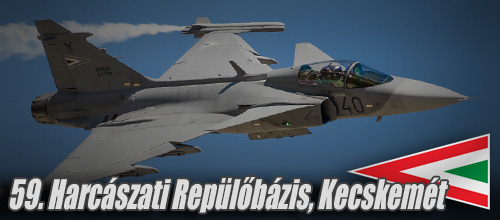
|
|
|
|
|
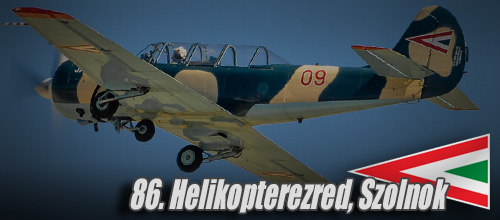
|
|
Kecskemét Nemzetközi Repülőnap, part 3
86. Helikopterezred; Kecskemét, August 2-5, 2013
Szolnok is currently the only operational helicopter base in Hungary. On this basis are the Mi-8 and the Mi-17 transport helicopters and the Mi-24 attack helicopters stationed. It is not yet clear how many Mi-8 and Mi-17 helicopters will stay in operational service in the near future. Many helicopters are on paper still operational, but they all make only a few flying hours per year due to lack of money. Also the Yak-52 trainers are stationed at this base. These small planes are used for the elementary flight training the new Hungarian Air Force pilots.
|
|
|
|
|
The Lithuanian Air Force
The Baltic States, part 1; Šiauliai-Zokniai, September 9 2013
The Lithuanian Air Force was re-established after the fall of the Soviet Union in 1992. The Air Force of Lithuania (Lietuvos Karinės Pajėgos Oro) is the flying military branch of the Lithuanian Armed Forces (Lietuvos Ginkluotosios Pajėgos). It has always been difficult for this country to maintain a strong air force with their limited financial resources. All aircraft of the Lithuanian Air Force were marked with the double cross of Vytis from June 12, 1992. The air defense of this small country is maintained by the NATO Baltic Air Policing since 2004.
|
|
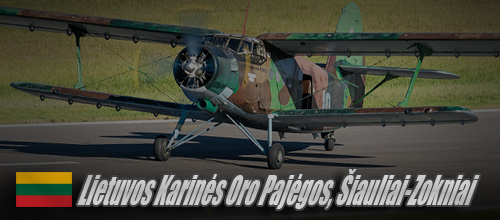
|
|
|
|
|
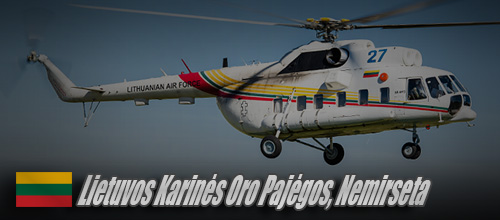
|
|
The Lithuanian Air Force
The Baltic States, part 2; Nemirseta, September 10, 2013
Apart from the small air force, Lithuania had also a volunteer army which had a small fleet of light aircraft in operational service until 2009. These aircraft were eventually added to the Lithuanian Air Force. The Mi-8 "Hip" helicopters play also an important role in the country on the Baltic coast line when it comes to SAR. In addition to the Air Force, Lithuania had in the past a Defense Volunteer Service (Savanoriskoji Krasto apsaugos Tarnyba) (SKAT). This part of the army was mainly equipped with planes which were ex DOSAAF from the Soviet Union.
|
|
|
|
|
The Lithuanian Aviation Museum
The Baltic States, part 3; Kaunas-Aleksotas, September 11, 2013
The Lithuanian Ministry of Culture opened the Lithuanian Aviation Museum on February 19, 1990. This museum is located on
the edge of the national airport Kaunas-Aleksotas. The museum now has more than 43 aircraft and helicopters in its
collection. Most of these aircraft have served in the Air Force or the Border Guard of Lithuania. Most of the ex-military
aircraft are lined up outside on the terrain of the museum. The museum contains aircraft and helicopters which were
operational in the entire history of Lithuania and the Sovjet-Union.
|
|
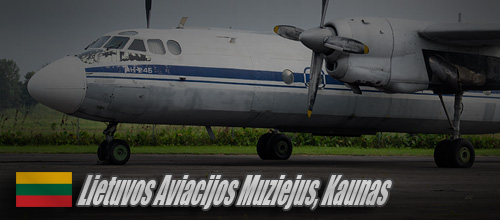
|
|
|
|
|
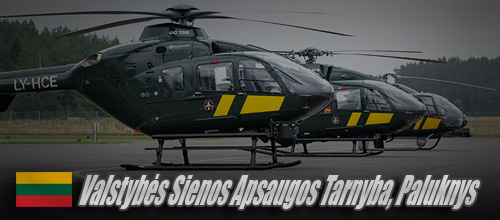
|
|
The Lithuanian Border Guard
The Baltic States, part 4; Paluknys, September 11, 2013
The flying branch of the Lithuanian Border Guard was established in 1992. Lithuania was for a long time a part of the Soviet Union and didn’t had an own air force. The Border Guard is now equipped with several modern patrol helicopters such as the light size EC120, the light size EC135 and the medium size EC145. The Border Guard is responsible for monitoring the Lithuanian borders on land and at the Baltic Sea. Lithuania has become a Schengen country since 2007 and has the task to monitor the European borders with Belarus and Russia.
|
|
|
|
|
The Riga Aviation Museum
The Baltic States, part 5; Riga Airport, September 9, 2013
The Riga Aviation Museum has nowadays a large collection of aircraft and helicopters which were received in the past
40 years. Before 1997, the museum was a private museum without the influence of the Latvian state. The museum has the
largest collection of ex-Soviet aircraft in Europe, but the planes are very close together and are not always complete.
Yet, there are special aircraft in the collection which cannot be found in many other museums. Some examples are a
MiG-25 "Foxbat", a few MiG-21 "Fishbed’s" and a T-22M2 "Backfire".
|
|
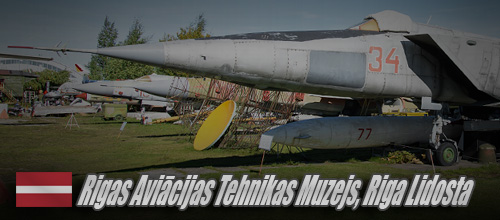
|
|
|
|
|
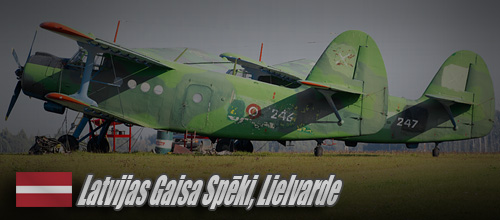
|
|
The Latvian Air Force
The Baltic States, part 6; Lielvarde, September 12, 2013
The Latvian Air Force is the aviation branch of the Latvian Defense forces. The first Latvian units were established in 1992 after the independence of the Soviet Union. The first airfield which was used again by the Latvian Air Force was Spilve Riga, where a number of An-2 aircraft and Mi-2 helicopters were based. Riga-Spilve was initially an excellent base, because the infrastructure was still intact. The air force is not able to perform its own air defense; therefore, this is mission carried out by the NATO under the name Baltic Air Policing.
|
|
|
|
|
The Estonian Air Force
The Baltic States, part 7; Ämari, September 13, 2013
Since the independence from the Soviet Union, Estonia has a small air force which is completely based at Ämari Air Base in the northwest of the country. The Estonian Air Force was re-established again after the country was officially declared independent on December 16, 1991. It was initially very difficult to build up a new air force, because the Soviets had taken everything from the airfields or left it badly dama- ged. The country is unable to perform the air defense with its small fighter fleet; the air defense depends on the NATO Baltic Air Policing.
|
|
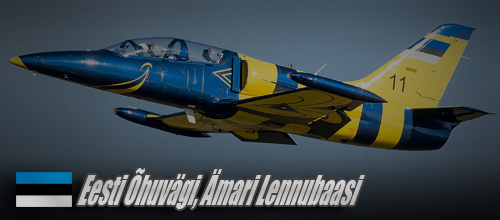
|
|
|
|
|
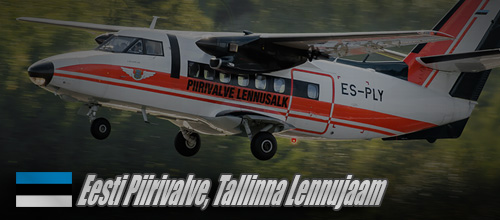
|
|
The Estonian Border Guard
The Baltic States, part 8; Tallinn Airport, September 13, 2013
Since the establishment of the Estonian Border Guard in 1990, there are several planes and helicopters in service at the Estonian Border Guard Aviation Group (Piirivalve Lennusalk). The Border Guard has evolved over the years into a very modern organization which is guarding the borders and land interests of Estonia. The Border Guard Aviation group of Estonia is since its founding in 1993 based at the international airport of Tallinn. The Estonian Border Guard complex was built on the north side of the runway of the airport.
|
|
|
|
|
The Private Collection of Tartu
The Baltic States, part 9; Tartu-Veskiorg, September 13, 2013
The Aviation Museum in Tartu is located in the south western part of Estonia and contains an impressive collection
of aircraft. The planes in this museum are in fact very well maintained and look like operational aircraft. Some
highlights which can be found in the museum, are; an Ukrainian Su-24 Fencer, a Polish MiG-21bis, a Swiss Mirage
IIIRS and an Ukrainian MiG-23 Flogger. Visitors can visit the museum by ap- pointment only, because the collection
is basically a private property of the owner of this wonderful and well maintained museum.
|
|
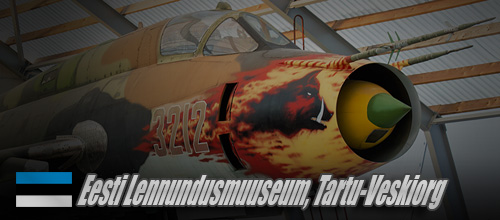
|
|
|
|
|
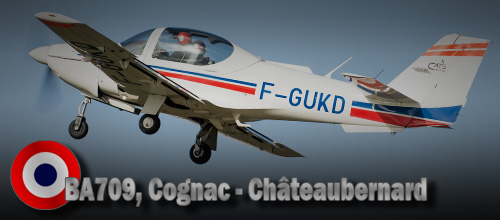
|
|
Basic training with EPAA 00.315
Training Flights at Cognac; Cognac, November 21, 2013
At the French airbase Cognac-Châteaubernard the training unit EPAA 00 315 is stationed. The abbreviation EPAA stands for
Ecole de Pilotage de Navigation et de l'Armée de l'Air; translated this means flying school for elementary education and
navigation. The unit is equipped with the German Grob120 for basic training and the French Aerospatiale TB30 Epsilon for
navigation and advanced training. This unit is the first pilot program in which the young pilots will start. After the
basic training they go to Tours for the jet training on the Alpha-Jet.
|
|
|
|
|
Mirage F1, the Final Live Firing Training
Campagne de Tir, part 1; Cazaux, November 22, 2013
The last operational Mirage F1 fighters of the French Air Force practi- ced their bombing skills for the last time at the
shooting range in the third week of November 2013. During this last Campagne de Tir at the French airbase Cazaux in the south
of France, live weapons were dropped during the media day around this event. There are still 20 Mirage F1s in operational
service which are used for reconnaissance and bombing missions. This campaign is intended to qualify the pilots for the
dropping of bombs to prepare them for detachments abroad.
|
|
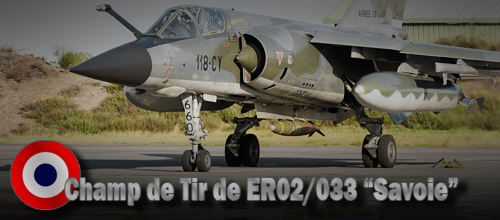
|
|
|
|
|
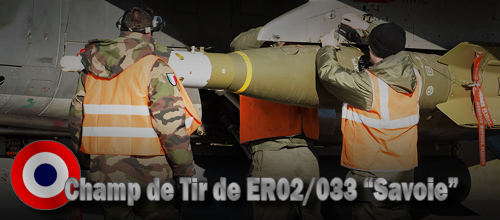
|
|
Mirage F1, the Final Live Firing Training
Campagne de Tir, part 2; Cazaux, November 22, 2013
During the Campagne de Tir at Cazaux, Mirage F1 aircraft were equip- ped with some Mk82 unguided bombs and GBU-12 laser-guided
bombs. The aircraft would drop these live weapons at practice targets on the Captieux Range. This large shooting range
located at a distan- ce of about 100km away from Cazaux. The debriefing is conducted with visualization on a computer
based on the inclusion of flight pa- rameters on the HUD of F1CR. They will determine the accuracy of the bomb which was
dropped on the target according to procedures.
|
|
|
|

|







